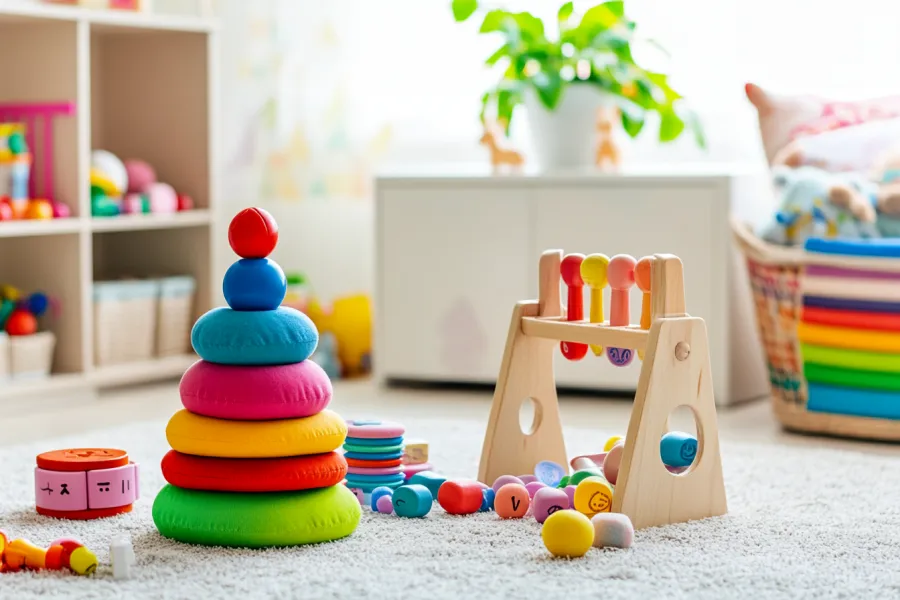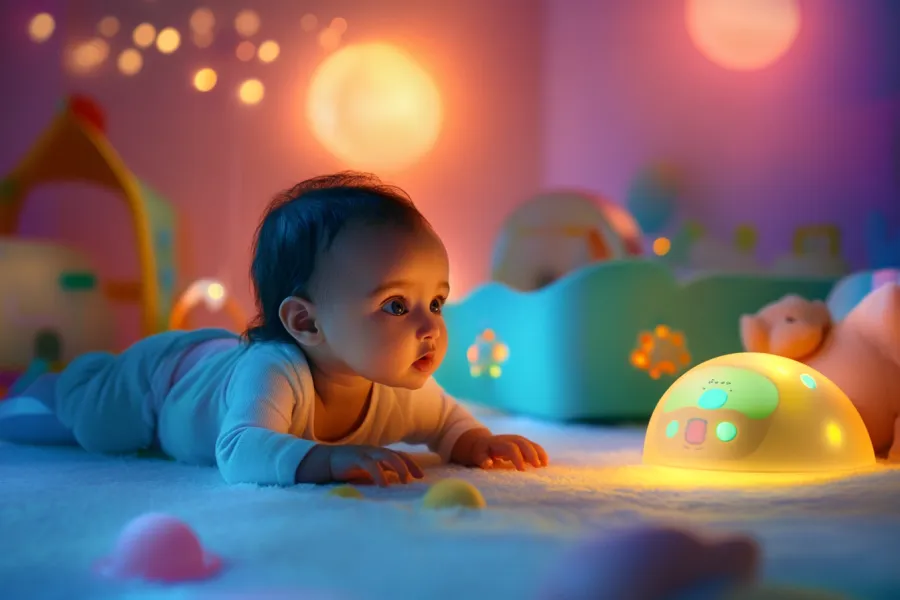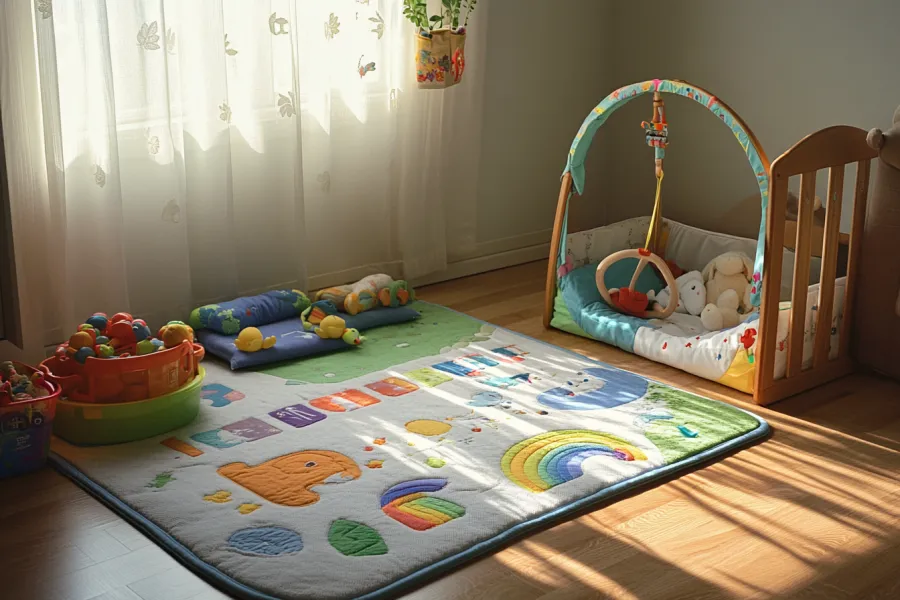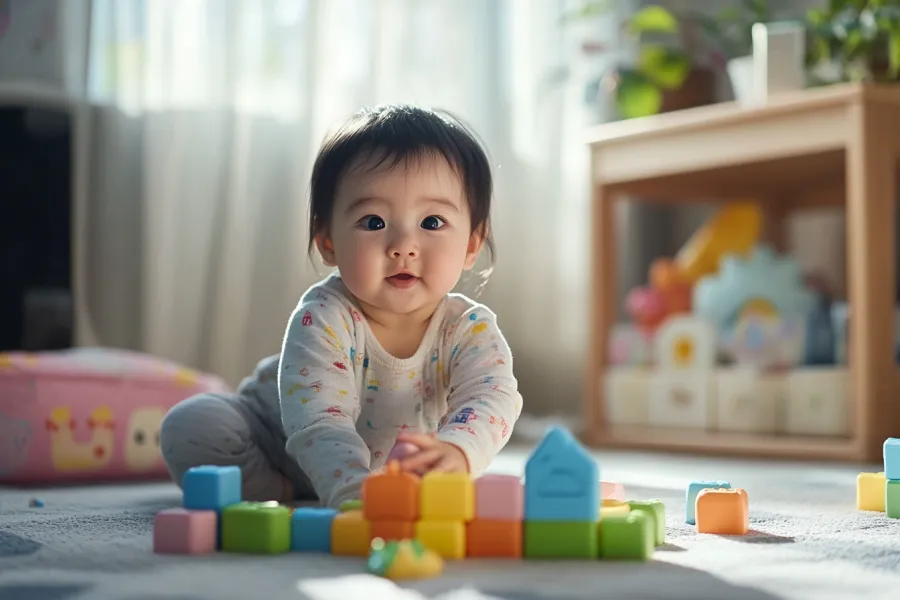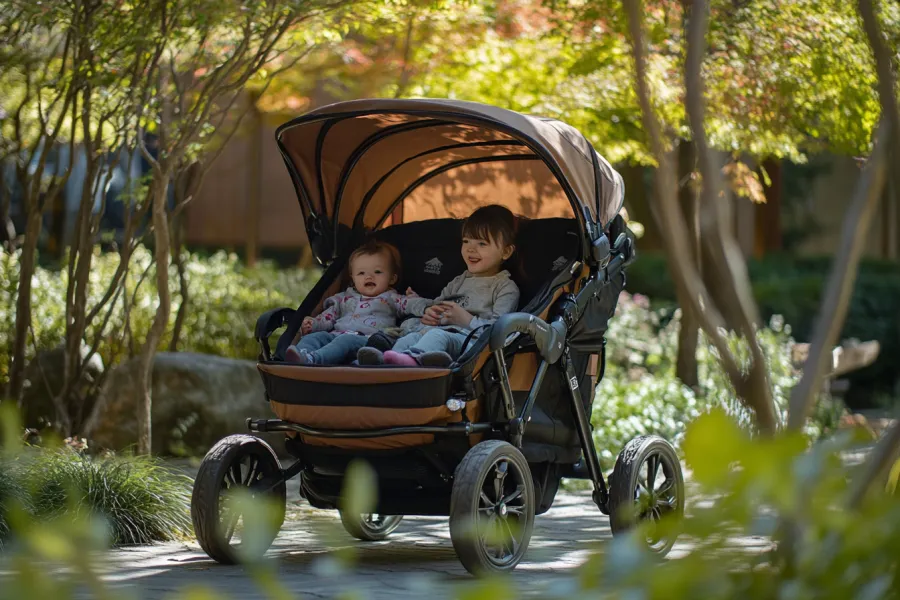.
Babies are naturally curious little explorers. From the moment they start noticing the world, their senses are hard at work, soaking up everything new around them. Sounds, colors, textures—all these things help babies make sense of the environment, and the right toys can take this exploration to the next level.
Toys aren’t just about fun; they’re about learning, too. The right ones can help babies develop critical skills while keeping them engaged and entertained. Let’s take a look at how some specific toys do just that and why they’re such a great choice for your baby’s sensory adventure.
A Quick Look At Some Of Our Favorite Toys
The Power of Sensory Play in Early Development
1. A Splash of Colors and Sounds
Babies are drawn to bright, bold colors and interesting sounds. They’re like little magnets for their attention! Toys like this one are fantastic for helping babies focus on what they see and hear. The more your baby plays, the more they start to understand cause and effect—when they shake or press something, and it makes a sound, they get that something happens because of what they did. It’s an important early lesson wrapped up in a fun package.
These types of toys also encourage hand-eye coordination as your baby learns to reach for what they see. Visual and auditory stimulation lays the foundation for cognitive development. It’s amazing how something so simple can have such a big impact on your baby’s growing mind.
Pros:
- Eye-catching colors for visual stimulation
- Fun sounds encourage interaction
- Helps develop hand-eye coordination
Cons:
- Some babies might lose interest once they’ve figured out the sounds
2. Textures and Tactile Wonder
Babies love exploring with their hands—whether it’s soft, squishy, rough, or smooth, they want to touch everything! This toy is packed with different textures, perfect for keeping your little one’s fingers busy. As they squeeze, pull, and grab, they’re learning about the world through touch. It’s more than just fun; it’s helping them strengthen their fine motor skills.
Every time your baby plays with a toy like this, they’re working on their grip and gaining better control over their little hands. It’s a great way for them to discover different materials while also building those all-important fine motor skills that will help them as they grow.
Pros:
- Variety of textures for tactile exploration
- Encourages fine motor skill development
- Easy to grab and manipulate for small hands
Cons:
- May need supervision if parts are small or detachable
3. Building Blocks for Coordination
Stacking and sorting are key activities for babies learning about balance and coordination. This toy encourages just that. At first, your baby might love knocking everything down, but as they grow, they’ll start figuring out how to stack things up and put them in the right places. It’s a fun way for them to practice their motor skills and problem-solving abilities.
These toys are great because they don’t just help with coordination—they also introduce your baby to problem-solving early on. As they learn how different pieces fit together, your child will be able to nurture their building skills that will benefit them long after the toy is put away.
Pros:
- Promotes hand-eye coordination and balance
- Great for problem-solving practice
- Keeps babies engaged with stacking and sorting challenges
Cons:
- Pieces may be easy to lose if not stored properly
4. A Multisensory Playground
For a full sensory experience, you can’t beat toys that stimulate sight, sound, and touch all at once. This toy is a real sensory playground for babies. With colors, sounds, and different textures, it offers a bit of everything. Babies can press buttons to hear sounds, feel various materials, and enjoy the whole multisensory experience.
Toys like this help babies engage all their senses at once and give them a more complete understanding of their environment. They learn to recognize patterns, respond to sounds, and explore textures—all while developing their coordination and cognitive skills. It’s a toy that really does it all, which makes it a fantastic tool for overall development.
Pros:
- Engages multiple senses at once
- Helps improve coordination and cognitive development
- Keeps babies entertained with a variety of features
Cons:
- Might overwhelm some babies with too many stimuli at once
Frequently Asked Questions (FAQs)
Q: At what age should babies start using sensory toys, and how should the toys evolve as they grow?
A: Babies can start exploring sensory toys pretty much right from birth! Early on, simple black-and-white toys are great because newborns can see high contrast better than bright colors. As they grow, around 3-6 months, you’ll notice they start getting more interested in colors and sounds, so this is the perfect time to introduce toys with vibrant hues, rattles, or things that make noise.
Once they hit the 9-12 month mark, they’re ready for more interactive toys like stacking blocks or shape sorters. These toys help with motor skills and problem-solving. As they keep growing, it’s a good idea to gradually give them more complex toys that match their development. You’ll see them learning new things every day through play!
Q: Are there any choking hazards I should be aware of in infant toys?
A: Absolutely. The main thing is to make sure the toys are big enough that they can’t fit entirely into your baby’s mouth. Toys shouldn’t have any small parts that could come off and get swallowed—anything smaller than about 1.25 inches can be a risk. And don’t forget to check the toys regularly for any signs of wear and tear, like loose seams or broken pieces, which could become hazards over time. Teething toys are especially important to keep an eye on because babies love to chew on them, and you want to make sure they’re still in good shape after all that gnawing!
Q: How do I know if an infant toy is stimulating enough for my baby?
A: You’ll know a toy is doing its job if your baby is actively engaging with it—reaching for it, shaking it, or feeling its textures. If it grabs their attention and keeps them curious, it’s probably a winner. Toys that offer a mix of textures, sounds, and colors usually do a great job of stimulating multiple senses. Look for toys that also encourage problem-solving, like stacking rings or toys that make them figure out how things fit together. If your baby seems bored or uninterested in a toy quickly, it might not be the right fit for their current stage of development.
Playtime with a Purpose
Toys are so much more than just something to keep babies busy. They’re tools that help them grow, learn, and understand the world around them. By picking toys that engage different senses—whether it’s through sound, touch, or sight—you’re giving your baby the chance to explore, learn, and develop essential skills.
Next time your baby grabs, shakes, or stacks a toy, remember that they’re not just playing. They’re growing, learning, and building the foundation for a bright future.

